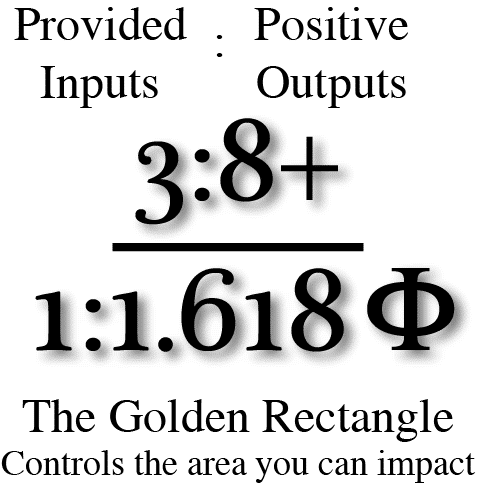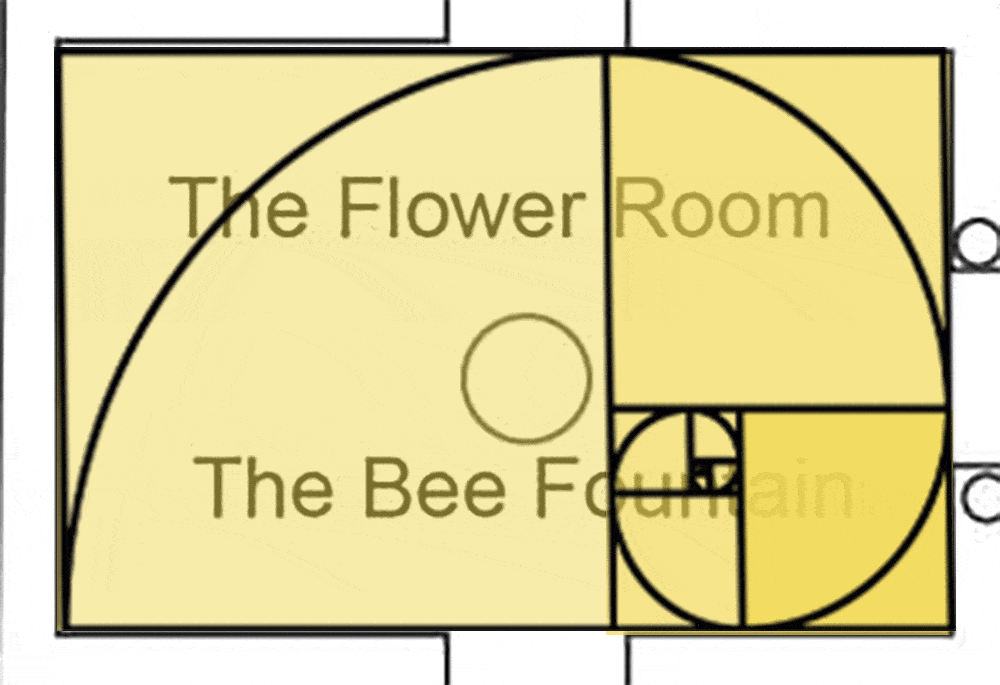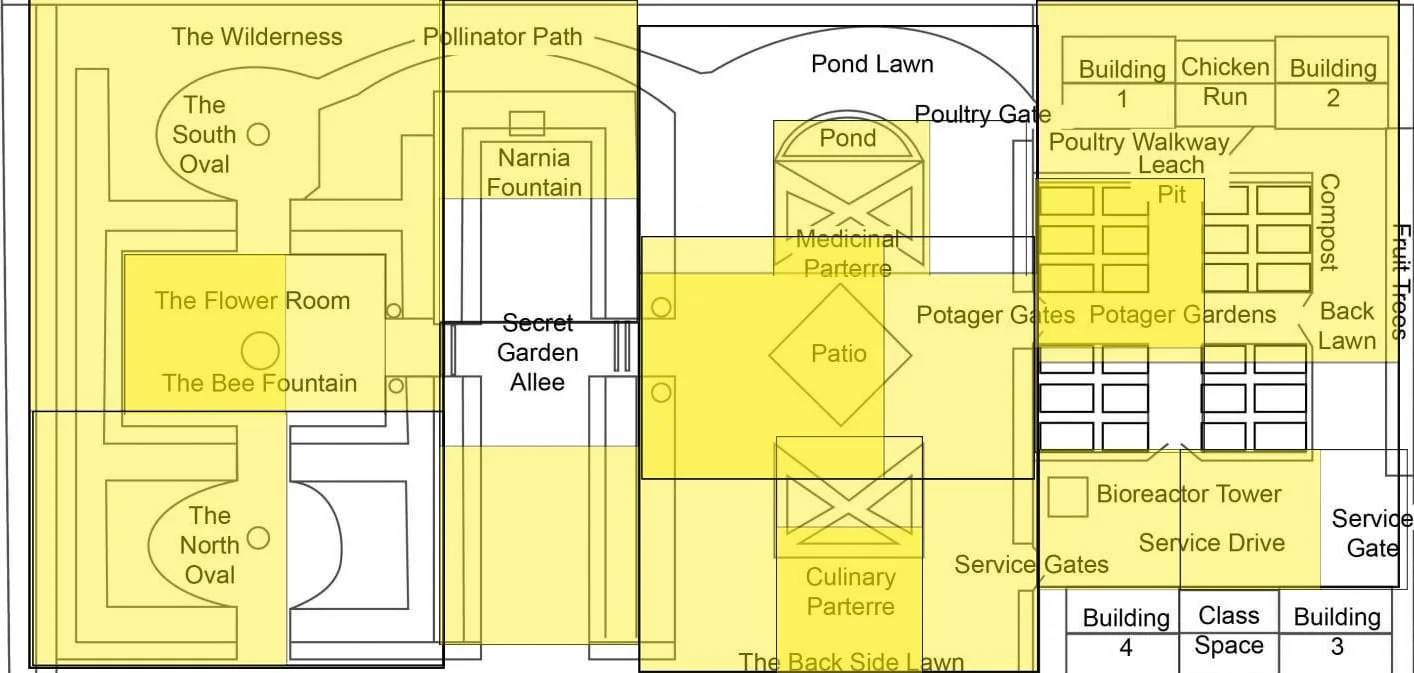The Amended Law of Sustainability
The Law of Sustainability: 3 inputs, 8 positive outputs in an area defined by Phi
This is the equation of sustainability (I also call it the amended law of sustainability) that we try to adhere to here at Mezzacello. It is not mathematically consistent. It is meant more as a good reminder of what is needed to create ecosystems and systems with balance, diversity, and resilience.
[3:8+ / 1:1.618] It’s not just mathematical…it’s biologically perfect.
Dr, Stephen Lewis, PhD
The equation has two parts: Inputs and Outputs (I/O) and Balanced Growth. Together these two will create dynamic tension in resources and effort to create sustainable models.
Inputs and Outputs
Mezzacello is an enclosed, interdependent series of ecosystems in a densely urban built environment. The need to control and produce inputs and outputs is essential to our core mission. We need to be resourceful - as we can't possibly just go buy everything we need on demand.
That is why the 3:8 ratio is so important. It not only forces you to stretch resources. It also requires that you reimagine what those resources are AND what can be combined as an output.
Consider the inputs and outputs of this fountain.
Trying to be more creative and adaptable can help you in your thinking about a system. The new ideas created make it easier to start creating and modeling sustainability in the first place. Don't see the water: See the benefits of the water up and down the food chain.
Creative Writing Leads to Adaptability
I like to think of mapping sustainability as creative writing. In creative writing we don't go for the obvious story. We want to be bold and go for the hidden magic inside of the mundane story.
Reframing the inputs and outputs is essential. By thinking about sustainable systems this way I expand my mind and my creativity. This way, I start thinking about ways to use an output that I might not have imagined before.
In the context of sustainability, diversity and adaptability are key concepts. Natural systems are never going to be discrete one to one models. That is a wasteful system that nature abhors.
Instead nature spreads risks and benefits out as part of the system to insure max benefit and to minimize harm. Humans are really bad at this. But with practice, we can get better, and we must.
The Role of Phi
I chose phi in this equation for a very specific reason. Balance and proportion. That is what phi (1:1.618) really is.
Sometimes Phi is called the "Golden Rectangle" or the "Golden Mean" but it is deeper than that. It is a ratio that controls the relationships between two or many things that keeps them all in balance. For example phi can be related as a triangle, a circle, even stars can be represented in Phi.
Stars (or pentagons) represented in Phi
What this proportion is is simply not as important as the relationship of the proportions themselves. It seems that nature is curiously responsive to 1:1.618. It will accommodate this proportion anywhere, so long as the proportion is consistent.
The Phi Diagram of the Bee Fountain Area
The Phi Diagram of Mezzacello
map of phi and structure
This is a map of phi on a map for layout and clarity.
Phi as a Boundary as Well as a Denominator
Let me elaborate on the role of placement, proportion, and sustainable function in my gardens. These are the same two maps. One is the proportions of phi and the relationships to ecosystem boundaries, the other is that same graphic laid over a map.
Sustainability is a map as well as a series of actions.
Jim Bruner
When you ask, "how does Phi help you maintain sustainability?" This Phi Map is how. It is a strategic placement and interconnection of inputs and outputs that are inherently sustainable because their boundary has a proportion to their input costs and positive outputs.
I think it's important to acknowledge that this abstraction is not obvious to everyone, and that I did not come to this alone. I thank my friend, Steve Lewis the Mathemagician for the idea of Phi as a measure, and my husband Rick Riley, for the realization that Phi is beauty - always.
The most surprising influence was a summer camp student named Elliot who identified that in the equation, sustainability demands positive outputs. That addition of the positive variable was inspired by Elliot and his observation.
See For Yourself
I strongly encourage you to try to build a system that models this equation. Remember that time can be both an input and an output. That is why you need to think creatively about BOTH sides of this equation.
Good luck and let me know how you do or - how I can help. Make a map of your space and see if you can maintain this proportion of sustainability. Use tracing paper or a graphic program.
Remember, if you are the alpha animal of your garden, those proportions need to accessible to you as well. Two important ecosystems that are NOT close will NOT be sustainable. Walking takes time and time is both an input AND an output and can be optimized with Phi.
This is a part of the City of Columbus Parks and Recreation Summer Grant Grant #1521-2023







